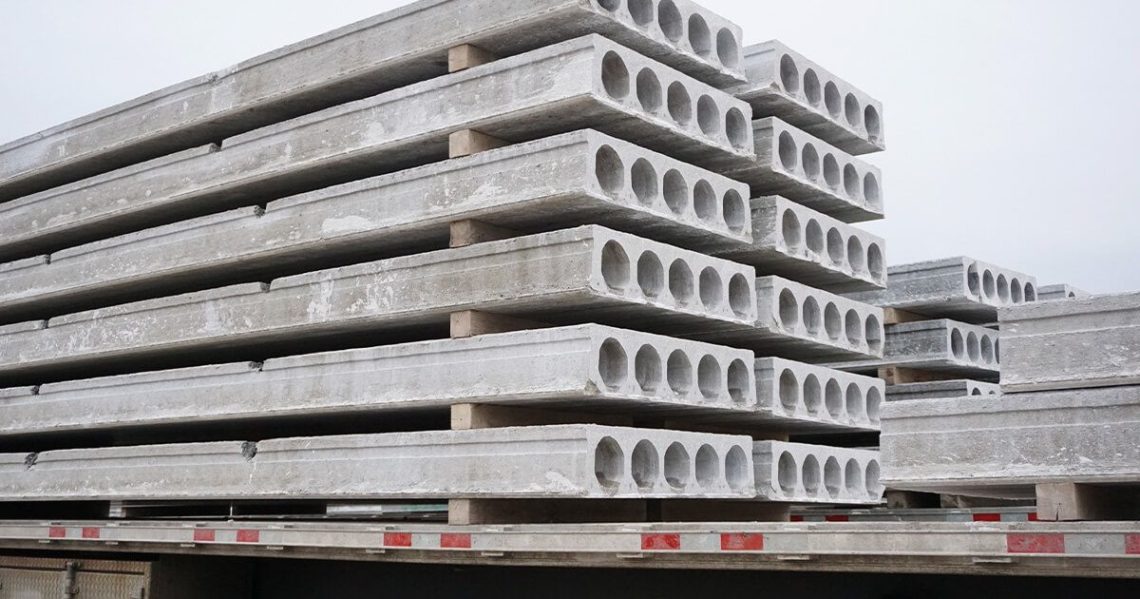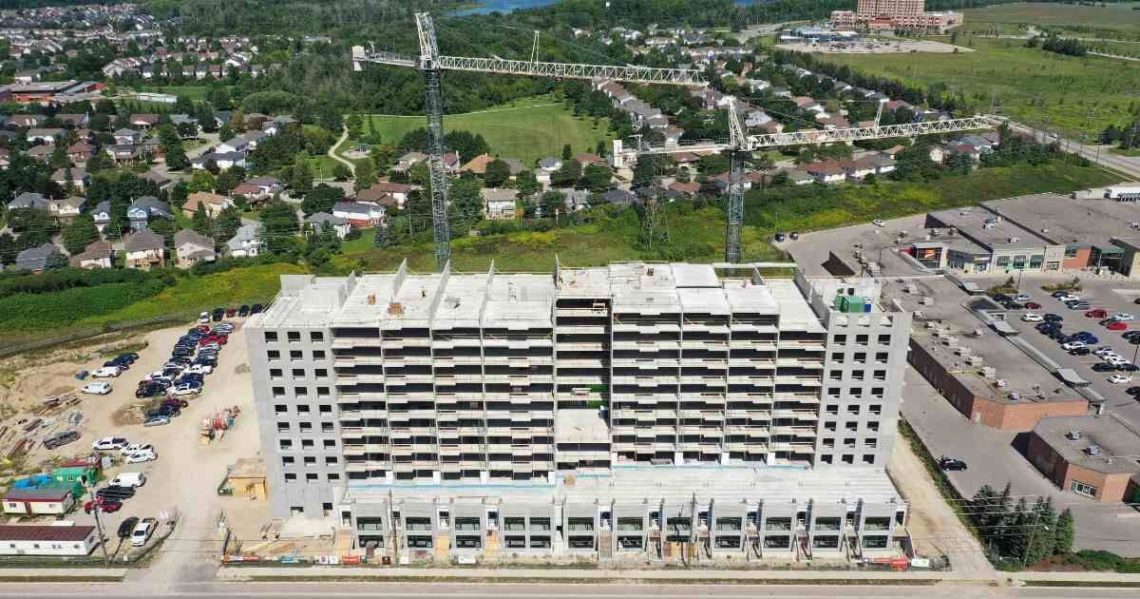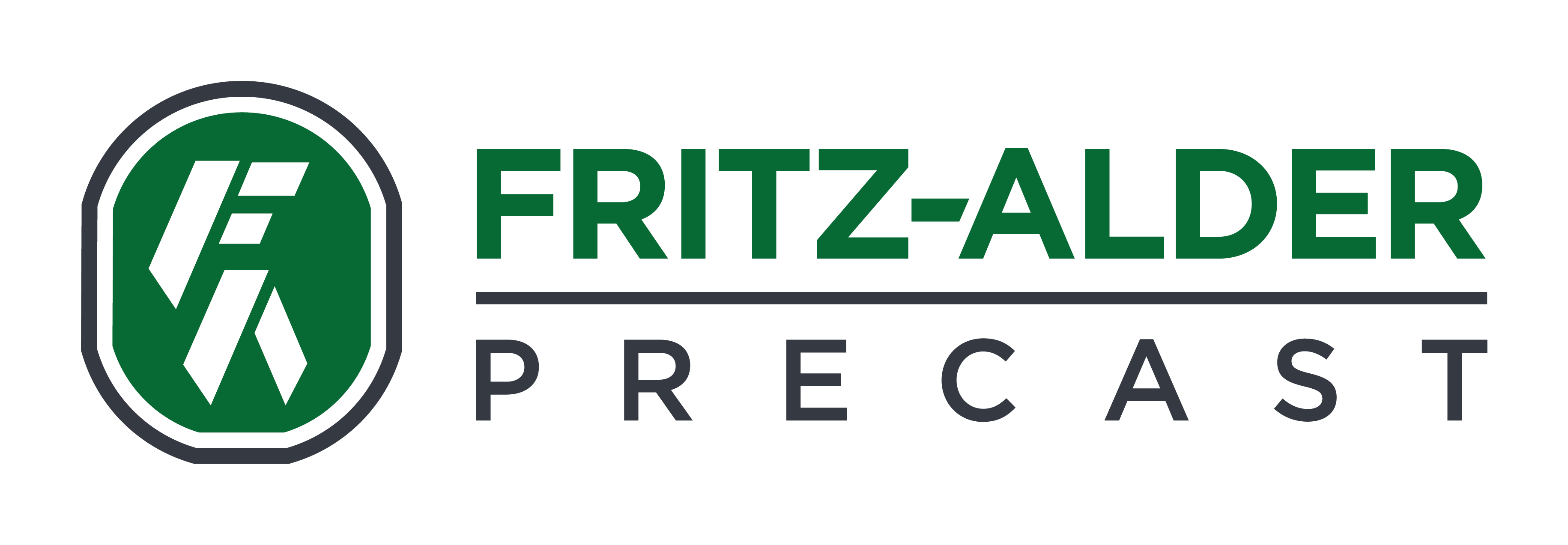Explore how precast concrete and Hollowcore slabs are revolutionizing large-scale construction with efficient, sustainable solutions.
In large-scale construction projects, choosing the right type of flooring system is an important decision.
It’s not just about using materials that withstand the test of time, but also choosing a system that makes sense for your project’s timelines, budget, and practical needs.
This is where Hollowcore precast slabs stand out. Hollowcore slabs are special because they combine everything you want in a floor system: structural strength, installation efficiency, and sustainability. They’re not new, but how we make and use them today shows how far we’ve come in building better, faster, and smarter.
Hollowcore slabs are made for today’s building challenges, cutting down on construction time and costs without cutting corners on quality. Let’s look at how Hollowcore slabs are revolutionizing flooring systems in large-scale projects.
Fritz-Alder Precast is at the forefront of precast concrete, including the largest selection of Hollowcore thickness and spans on the market. Get in touch with our team to discuss your project requirements.
What are Hollowcore Precast Slabs?
Hollowcore precast slabs are a type of precast product used to construct floors and roofs in many types of buildings. They have cylindrical holes or ‘voids’ running the entire length, making them lighter but equally strong as solid concrete slabs of the same thickness. The size and number of voids can vary depending on the specific load requirements of the project.

The idea behind Hollowcore slabs is not new. It dates to the early 20th century when manufacturers searched for ways to reduce the weight of concrete slabs without sacrificing strength. These efforts led to the development of Hollowcore slabs as we know them today.
Over the years, these slabs’ production methods and technology have evolved, making them even more efficient and versatile for modern construction needs.
The combination of hollow design and prestressing gives Hollowcore slabs their main advantages: they are lighter, which can reduce costs related to materials and transportation, and they are very strong, capable of spanning long distances without support. This makes them an ideal choice for large-scale projects, such as commercial buildings, parking garages, and residential complexes.
As technology has advanced, so can produce Hollowcore slabs that meet the specific needs of modern construction projects. For example, the industry used to rely on vibrating extruders. While effective for compacting the concrete and creating the slabs, the constant vibration could lead to inconsistent quality. Today, Fritz-Alder Precast uses shear compaction extruders, which results in a denser slab with more precise dimensions and fewer defects.
Plus, because the process is more reliable, we can produce slabs faster and more efficiently and pass on the benefits of reduced waste and lower costs to our customers.
What is Prestressed Concrete?
Hollowcore slabs are prestressed, meaning the concrete is pre-compressed during manufacturing to better handle tensile forces once in use. This process involves stretching steel strands before pouring the concrete and releasing the tension once the concrete has cured, compressing the concrete and making it stronger.
A helpful analogy for understanding how prestressed concrete works is this:
- Imagine you have a stack of playing cards that you want to pick up and move without any slipping or the stack falling apart.
- If you wrap a rubber band tightly around the centre of the stack, the pressure it applies keeps the cards tightly together. This allows you to lift or move the stack as a single, solid unit because the rubber band’s tension has created a compressive force that holds everything in place.
- In prestressed concrete, steel tendons (like the rubber band) are stretched and then anchored to the concrete (the stack of cards). The tension from the stretched steel applies a compressive force to the concrete, making it much stronger and more resistant to tensile (pulling apart) forces.
Just like the rubber band keeps the cards tightly together, allowing you to move them as one solid block, the prestressed steel keeps the concrete compressed, enhancing its structural integrity and enabling it to support heavier loads without cracking.
The Benefits of Choosing Hollowcore Slabs for Flooring Systems in Large-Scale Projects
When we compare Hollowcore slabs to traditional flooring systems such as cast-in-place concrete, steel deck, and wood framing, four key benefits stand out: strength, cost and material efficiency, installation time, and environmental impact.
When we compare Hollowcore slabs to traditional flooring systems, five key benefits stand out: strength, cost and material efficiency, installation time, environmental impact, and design efficiency.
1. Where Strength Meets Flexibility
Hollowcore slabs are designed to provide long spans without the need for intermediate support, which opens a range of possibilities for architects and engineers designing large spaces.
The ability to span large distances is due to the strength of the prestressed concrete and the unique hollow design, which reduces the slab’s weight while maintaining its structural integrity.
One key benefit of using Hollowcore slabs is the reduction in overall weight. The presence of voids within the slab means that less concrete is used, making the slab lighter than a solid concrete floor of the same thickness. This lighter weight reduces the load on the building’s foundation and other structural elements, which can save materials and construction costs.
Additionally, the reduced weight makes the slabs easier to transport and handle on-site, speeding up the construction process.
2. Cutting Costs, Not Corners
Hollowcore slabs are recognized for their role in reducing construction costs, a benefit that comes from material savings, lower transportation costs, and reduced labour needs.
First, the material savings stem from the slab design itself. The hollow cores mean less concrete is used to achieve the same if not superior, strength and durability as a solid slab. This material reduction lowers the cost of the concrete used in the slabs and contributes to a lighter structure. A lighter structure can mean a foundation that requires less material, further reducing costs.
Hollowcore slabs also have lower transportation costs. Their lighter weight makes them easier and cheaper to transport compared to solid precast concrete slabs. This is especially beneficial for large-scale projects with huge amounts of materials.
Finally, Hollowcore slabs are precast, meaning they arrive on-site ready to install, which eliminates the need for extensive formwork and curing time associated with pouring concrete on-site. As a result, the floor can be completed much faster, decreasing the amount of time workers must spend on site.
3. Speed of Construction
We just mentioned that Hollowcore slabs are manufactured off-site in a controlled environment and arrive at the construction site ready to install, which cuts out the many time-consuming steps associated with cast-in-place concrete. But that’s not the only way Hollowcore slabs help you meet construction deadlines.
Hollowcore slabs are straightforward to install. Since they are manufactured off-site to exact specifications, each slab fits into place like a puzzle piece. This precision reduces the need to make on-site adjustments and modifications, allowing you to move faster from one construction phase to the next.
Plus, as mentioned earlier, Hollowcore slabs can be prestressed to increase their strength and durability. This means they’re ready to bear loads immediately after installation. Hollowcore slabs create an instant work platform for other trades to begin work like electrical and plumbing installations, speeding up the overall construction process.
Another aspect of speed comes from the ability of Hollowcore slabs to serve as an immediate work platform once installed. This means subsequent construction activities, such as electrical and plumbing installations, can commence sooner, further accelerating the overall construction timeline.
4. Sustainability of Precast Concrete
Hollowcore slabs also for their sustainability and lower environmental impact relative to other flooring systems.
For one, these slabs use less material than traditional solid concrete floors thanks to their hollow design. This reduction in material not only lowers the cost of resources but also decreases the cost of transportation and gives buildings a smaller overall carbon footprint.
Hollowcore slabs can also benefit the environment by incorporating recycled materials. The concrete used in these slabs often includes recycled aggregates or supplementary cementitious materials, such as fly ash or slag cement.
Plus, the manufacturing process of Hollowcore slabs is highly efficient, producing less waste compared to traditional on-site concrete pouring methods. Since the slabs are precast in a controlled factory setting, there’s better management of materials and minimal excess concrete. This efficiency contributes to a reduction in construction waste, aligning with sustainable building practices.
5. Design Flexibility
Another big advantage of Hollowcore slabs is their design flexibility. These slabs can be cut to fit various building shapes and sizes, allowing for a high degree of customization in building design.
This adaptability is particularly useful in projects with unique architectural features or specific functional requirements. Architects are given more freedom—no need to design around bulky columns—and the cost savings mean that capital can be used on other features that enhance a building’s value.
Additionally, the voids in Hollowcore slabs can serve as conduits for electrical wiring, plumbing, and HVAC systems, further enhancing their utility in building design.

Why Hollowcore Slabs are the Future of Construction
Hollowcore slabs offer a solid advantage for large-scale construction projects. They’re not only used to saving time and money, although they do that well. They also tick the box for being sustainable, using less material without skimping on strength.
Here at Fritz-Alder Precast, we’re all about pushing the limits of what construction materials can do. Our Hollowcore slabs lead the pack with their mix of size, strength, and environmental benefits. Whether you’re planning a towering high-rise or a sprawling complex, we’ve got the right slab for the job
For all your precast concrete solutions, consider choosing Fritz-Alder Precast. If you want to learn more about us and how we can help you with your next project, you can meet us in person or virtually to learn more about our products and services. We’ll even provide lunch and give you the chance to learn.
Request a lunch and learn if you want to learn more about how we can help you.
